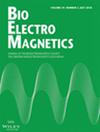Evaluation of Viral Inactivation on Dry Surface by High Peak Power Microwave (HPPM) Exposure
Ibtissam Echchgadda, Jody C. Cantu, Joey Butterworth, Bryan Gamboa, Ronald Barnes, David A. Freeman, Francis A. Ruhr, Weston C. Williams, Leland R. Johnson, Jason Payne, Robert J. Thomas, William P. Roach, Bennett L. Ibey
求助PDF
{"title":"Evaluation of Viral Inactivation on Dry Surface by High Peak Power Microwave (HPPM) Exposure","authors":"Ibtissam Echchgadda, Jody C. Cantu, Joey Butterworth, Bryan Gamboa, Ronald Barnes, David A. Freeman, Francis A. Ruhr, Weston C. Williams, Leland R. Johnson, Jason Payne, Robert J. Thomas, William P. Roach, Bennett L. Ibey","doi":"10.1002/bem.22435","DOIUrl":null,"url":null,"abstract":"<p>Previous research has shown that virus infectivity can be dramatically reduced by radio frequency exposure in the gigahertz (GHz) frequency range. Given the worldwide SARS-CoV-2 pandemic, which has caused over 1 million deaths and has had a profound global economic impact, there is a need for a noninvasive technology that can reduce the transmission of virus among humans. RF is a potential wide area-of-effect viral decontamination technology that could be used in hospital rooms where patients are expelling virus, in grocery and convenience stores where local populations mix, and in first responder settings where rapid medical response spans many potentially infected locations within hours. In this study, we used bovine coronavirus (BCoV) as a surrogate of SARS-CoV-2 and exposed it to high peak power microwave (HPPM) pulses at four narrowband frequencies: 2.8, 5.6, 8.5, and 9.3 GHz. Exposures consisted of 2 µs pulses delivered at 500 Hz, with pulse counts varied by decades between 1 and 10,000. The peak field intensities (i.e. the instantaneous power density of each pulse) ranged between 0.6 and 6.5 MW/m<sup>2</sup>, depending on the microwave frequency. The HPPM exposures were delivered to plastic coverslips containing BCoV dried on the surface. Hemagglutination (HA) and cytopathic effect analyses were performed 6 days after inoculation of host cells to assess viral infectivity. No change in viral infectivity was seen with increasing dose (pulse number) across the tested frequencies. Under all conditions tested, exposure did not reduce infectivity more than 1.0 log<sub>10.</sub> For the conditions studied, high peak power pulsed RF exposures in the 2–10 GHz range appear ineffective as a virucidal approach for hard surface decontamination. © 2023 Bioelectromagnetics Society.</p>","PeriodicalId":8956,"journal":{"name":"Bioelectromagnetics","volume":"44 1-2","pages":"5-16"},"PeriodicalIF":1.2000,"publicationDate":"2023-02-14","publicationTypes":"Journal Article","fieldsOfStudy":null,"isOpenAccess":false,"openAccessPdf":"","citationCount":"2","resultStr":null,"platform":"Semanticscholar","paperid":null,"PeriodicalName":"Bioelectromagnetics","FirstCategoryId":"99","ListUrlMain":"https://onlinelibrary.wiley.com/doi/10.1002/bem.22435","RegionNum":3,"RegionCategory":"生物学","ArticlePicture":[],"TitleCN":null,"AbstractTextCN":null,"PMCID":null,"EPubDate":"","PubModel":"","JCR":"Q3","JCRName":"BIOLOGY","Score":null,"Total":0}
引用次数: 2
引用
批量引用
Abstract
Previous research has shown that virus infectivity can be dramatically reduced by radio frequency exposure in the gigahertz (GHz) frequency range. Given the worldwide SARS-CoV-2 pandemic, which has caused over 1 million deaths and has had a profound global economic impact, there is a need for a noninvasive technology that can reduce the transmission of virus among humans. RF is a potential wide area-of-effect viral decontamination technology that could be used in hospital rooms where patients are expelling virus, in grocery and convenience stores where local populations mix, and in first responder settings where rapid medical response spans many potentially infected locations within hours. In this study, we used bovine coronavirus (BCoV) as a surrogate of SARS-CoV-2 and exposed it to high peak power microwave (HPPM) pulses at four narrowband frequencies: 2.8, 5.6, 8.5, and 9.3 GHz. Exposures consisted of 2 µs pulses delivered at 500 Hz, with pulse counts varied by decades between 1 and 10,000. The peak field intensities (i.e. the instantaneous power density of each pulse) ranged between 0.6 and 6.5 MW/m2 , depending on the microwave frequency. The HPPM exposures were delivered to plastic coverslips containing BCoV dried on the surface. Hemagglutination (HA) and cytopathic effect analyses were performed 6 days after inoculation of host cells to assess viral infectivity. No change in viral infectivity was seen with increasing dose (pulse number) across the tested frequencies. Under all conditions tested, exposure did not reduce infectivity more than 1.0 log10. For the conditions studied, high peak power pulsed RF exposures in the 2–10 GHz range appear ineffective as a virucidal approach for hard surface decontamination. © 2023 Bioelectromagnetics Society.
高峰值功率微波(HPPM)对干燥表面病毒灭活的评价
先前的研究表明,暴露在千兆赫(GHz)频率范围内的无线电频率可以显著降低病毒的传染性。鉴于全球范围内的SARS-CoV-2大流行已造成100多万人死亡,并对全球经济产生了深远影响,因此需要一种可以减少病毒在人类之间传播的非侵入性技术。射频是一种潜在的广效区病毒去污技术,可用于病人排出病毒的病房、当地人群混杂的杂货店和便利店,以及在几小时内跨越许多潜在感染地点的快速医疗反应的第一反应机构。在这项研究中,我们使用牛冠状病毒(BCoV)作为SARS-CoV-2的替代品,并将其暴露于四个窄带频率(2.8、5.6、8.5和9.3 GHz)的峰值功率微波(HPPM)脉冲中。暴露包括以500 Hz的频率传递2µs脉冲,脉冲计数在1到10,000之间变化数十年。根据微波频率的不同,峰值场强(即每个脉冲的瞬时功率密度)在0.6至6.5 MW/m2之间。将HPPM暴露于表面干燥的含有BCoV的塑料盖上。接种宿主细胞6天后进行血凝(HA)和细胞病变效应分析,以评估病毒的感染性。在整个测试频率中,随着剂量(脉冲数)的增加,病毒传染性没有变化。在所有测试条件下,暴露对传染性的降低不超过1.0 log10。在所研究的条件下,2-10 GHz范围内的峰值功率脉冲射频暴露作为硬表面去污的杀毒方法似乎无效。©2023生物电磁学学会。
本文章由计算机程序翻译,如有差异,请以英文原文为准。


